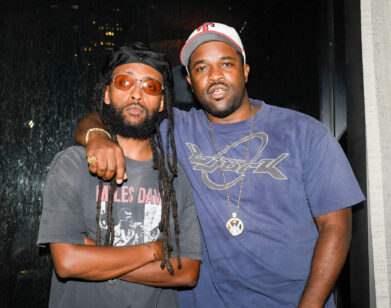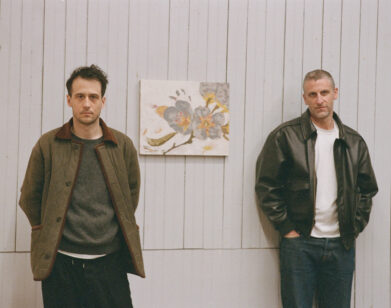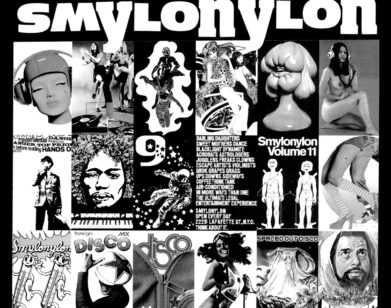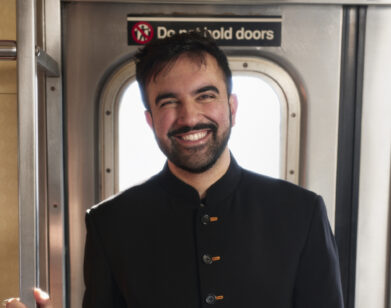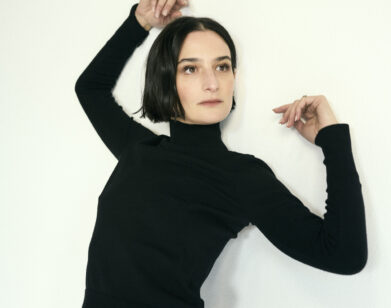SMOKE BREAK
“There Are No Rules”: 15 Minutes inArkansas with the Artist Awol Erizku
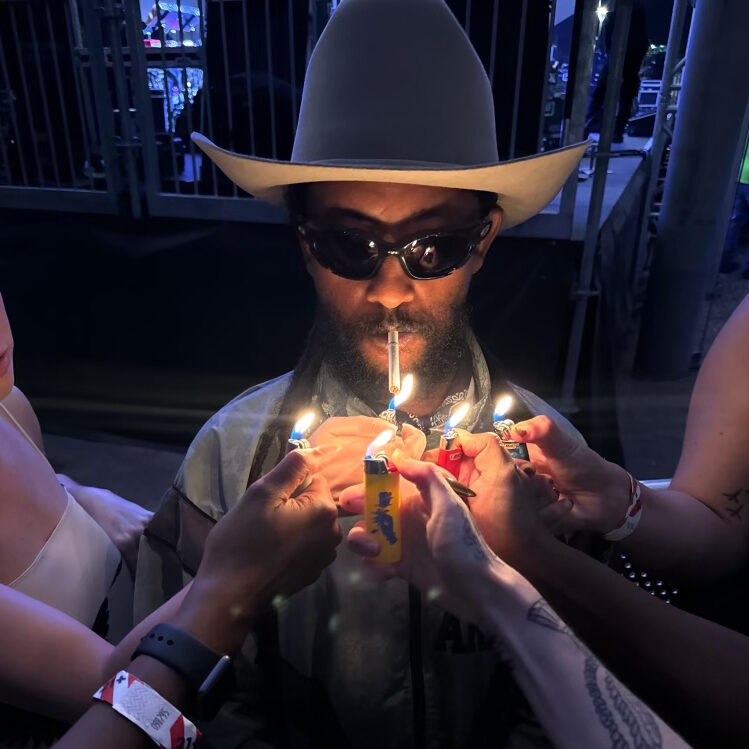
Photo courtesy of Awol Erizku.
FRIDAY 4:15 PM SEPTEMBER 13, 2024 BENTONVILLE, AR
Last week, Awol Erizku hosted a celebration for Mystic Parallax, a retrospective of his major works across sculpture, painting, photography, installation, and film. The show, on view at The Momentary until October 13th, follows the pioneering artist’s first monograph, published with Aperture, which showcased a body of work dedicated to following and expanding on the Black radical tradition. Motifs of the Pan-African flag and Nefertiti recur throughout, contributing to a visual language that Erizku terms “Afro-Esotericism.” “I feel like I have my own vernacular,” he explained to me at the exhibition opening in Bentonville, Arkansas last week. “I try to distill all these really intricate and complex ways of communication to get to that point.” After walking through the retrospective, we sat down with Erizku to talk about moving away from celebrity photography, what he calls “trap-conceptualism,” and why there’s no artistic medium he won’t try.
———
SANDSTROM: What’s it like to see work from different periods of your life all together?
AWOL: It’s rewarding. It’s been two years since it was published, so it’s become like a visual reference point. That’s important, because I can always look back and sort of trace any intellectual or visual idea to the stuff that I was making 10, 12 years ago. It really becomes a time capsule.
SANDSTROM: Does any of it feel dated?
AWOL: I wouldn’t say dated. I would definitely say that there are certain things that I would update. Very few, but I’m always conscious of this. In my practice there’s a lot of retroactive continuity, which allows me to kind of go back to my own archive and update images as I see necessary. For example, the Nefertiti motif is something that keeps recurring because I continue to visit different aspects of what that means. For me, the book is an open source. It’s open format, and it comes from the culture. So I want it to go back to the culture, back into the ether, and find a visual equivalent for what we hear in music, like “Fuck 12.” Taking those kind of things that are important for our generation and making them more visible, especially in these sort of spaces.

Installation view of Mystic Parallax. Photo courtesy of Tom McFetridge for the Momentary.
SANDSTROM: Do you imagine people responding to the book is almost like a resource?
AWOL: I hope so, yeah. It took it took a really long time. They approached me about a book probably five or six years ago, but I wasn’t ready. I just didn’t want to put out a book of like, “greatest hits.” I didn’t want to put out a book of things that I felt were just celebrity-driven, without having the core of my own vision in it. So I had to wait and make certain images complete.
SANDSTROM: Do you get frustrated when you’re associated with celebrities? The images that you’ve made that are so iconic, so maybe it feels hard to escape that?
AWOL: I only accept things that I feel are mutually beneficial for me and the collaborator. So in that sense, no, but I know what you mean. I do feel like I’m on my own path and then we come together for a moment and we make magic.
SANDSTROM: When you were taking some of those portraits, could you have imagined that you were shooting something that would be viewed by so many people?
AWOL: No, it never starts like that. It often starts with the question of, “Do I have something to add to this person’s legacy?” And, “What’s missing in their archive of images?” I try to pick an image or an idea that I think will suit what they need for that particular time. So part of me saying “yes” to a commission like that is to add something, not just to pair my name with [someone]. I often turn things down that I don’t really think I could add anything to.
SANDSTROM: That makes sense. I wanted to talk about the exhibition. I was so taken by the room of portraits of the girls in their bedrooms. And I love what you had written about replacing images of languid women throughout art history with contemporary Black women. I would love to hear, in your own words, why that mission felt so important?
AWOL: A similar question came up during the walkthrough and my answer is that, at the time I made them, I was much younger and maybe a little bit naive. I was ambitious enough to just make an offering that would potentially be part of like the bigger “capital A” art history canon. And now, I feel like maybe I’ve put that offering out and moved on from it. But I’ve learned a lot from it. In a way, if I didn’t make that body of work that was so challenging in so many different ways, maybe I would have been sort of stuck trying to update these conversations. When I was walking in the gallery earlier at Crystal Bridges, I was reflecting on why I decided to move away from referencing art-historical paintings, and in particular Western paintings, right? It’s like, once I’ve made that gesture and made my point about it, I’m like, “Cool.” Now I feel like I have my own vernacular and I can make works that are even more effective for our generation in the way that we communicate with images. I try to distill all these really intricate and complex ways of communication [we have] nowadays to get to that point.
SANDSTROM: I was going back through your body of work and thinking about how you categorize it as “Afro-Esotercism.” And I was wondering about your relationship to Afrofuturism.
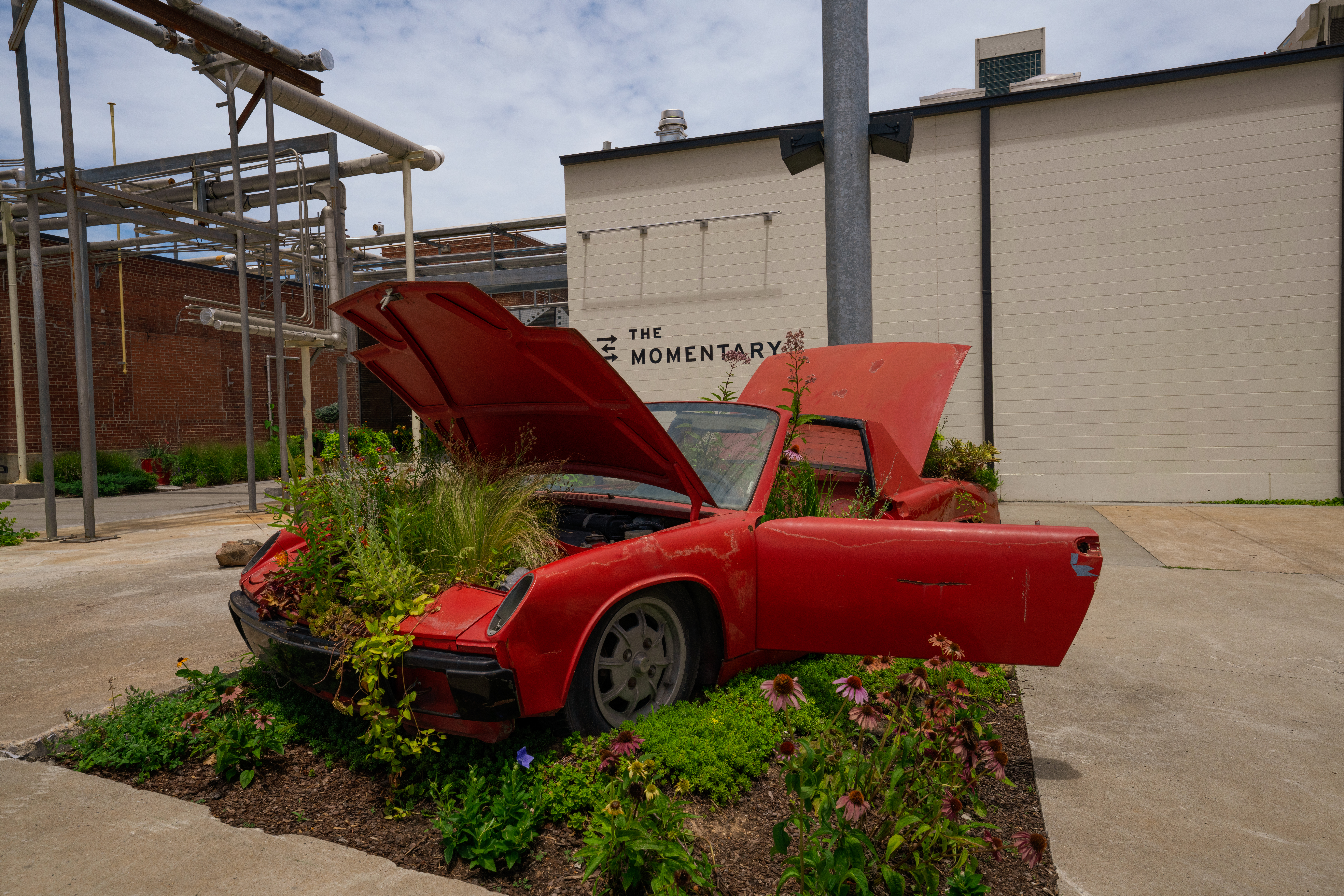
Installation view of Mystic Parallax. Photo courtesy of Tom McFetridge for the Momentary.
AWOL: I don’t want this to come off as someone who has disdain for Afrofuturism, but I know enough about it that I’m like, “I appreciate and respect what it’s done for the generation before me, but I’m coming after that and trying to find my own path and my own voice.” I don’t think most of that ideology suits me in what I’m trying to do. I’m still working on my own philosophy and part of it is still a part of Afrofuturism, but the bigger umbrella is “Afro-Esotericism.” In the last five years, I’ve also been distilling this idea of “trap-conceptualism,” which is works like Fuck 12. Are you familiar with Shawny Binladen? He’s a rapper from Queens, and him and his homies have this term that they use called “Figi,” which… I’ll let you Google it. But yeah, it’s taking that stuff and borrowing from music and then making a visual kind of component for it.
SANDSTROM: Let’s jump to something completely different. What’s something that no one knows about you?
AWOL: I’m the best father. And I have a dog named Prince.
SANDSTROM: Aw. What other artists would you say are working in the domain of “Afro-Esotericism” right now?
AWOL: I mean, there are multiple generations. Like, I’m part of a younger generation, but there are older artists that I respect. Also, it’s still a very private philosophy, but I’m trying to open it up a little bit more. There are younger artists, like David Alekhuogie, who went to Yale, and Aaron Fowler, also a Yale classmate. Zora J Murff, who also has a book with Aperture. These are guys who are around the same age as me and are interested in trap music or jazz and that historical lineage of Black radical tradition. Those are the guys that I look at and say, “Okay, he gets it.” I nod to it because I understand that maybe I took an idea like this far, and they might come along and just push it a little bit more. And that might inspire me to kind of respond to that. It’s a really healthy relationship in that sense. But I don’t want to lump them into what I’m doing. I just know that we agree on most things, you know? We’re not interested in a kind of linear read of the work. We’re very much open to a cosmic connection, if you will.
SANDSTROM: I love that. The last thing I was thinking about is that you’re so fluent in different mediums, and this exhibition is a wonderful display of that. Is there anywhere else you want to go that hasn’t been touched yet?
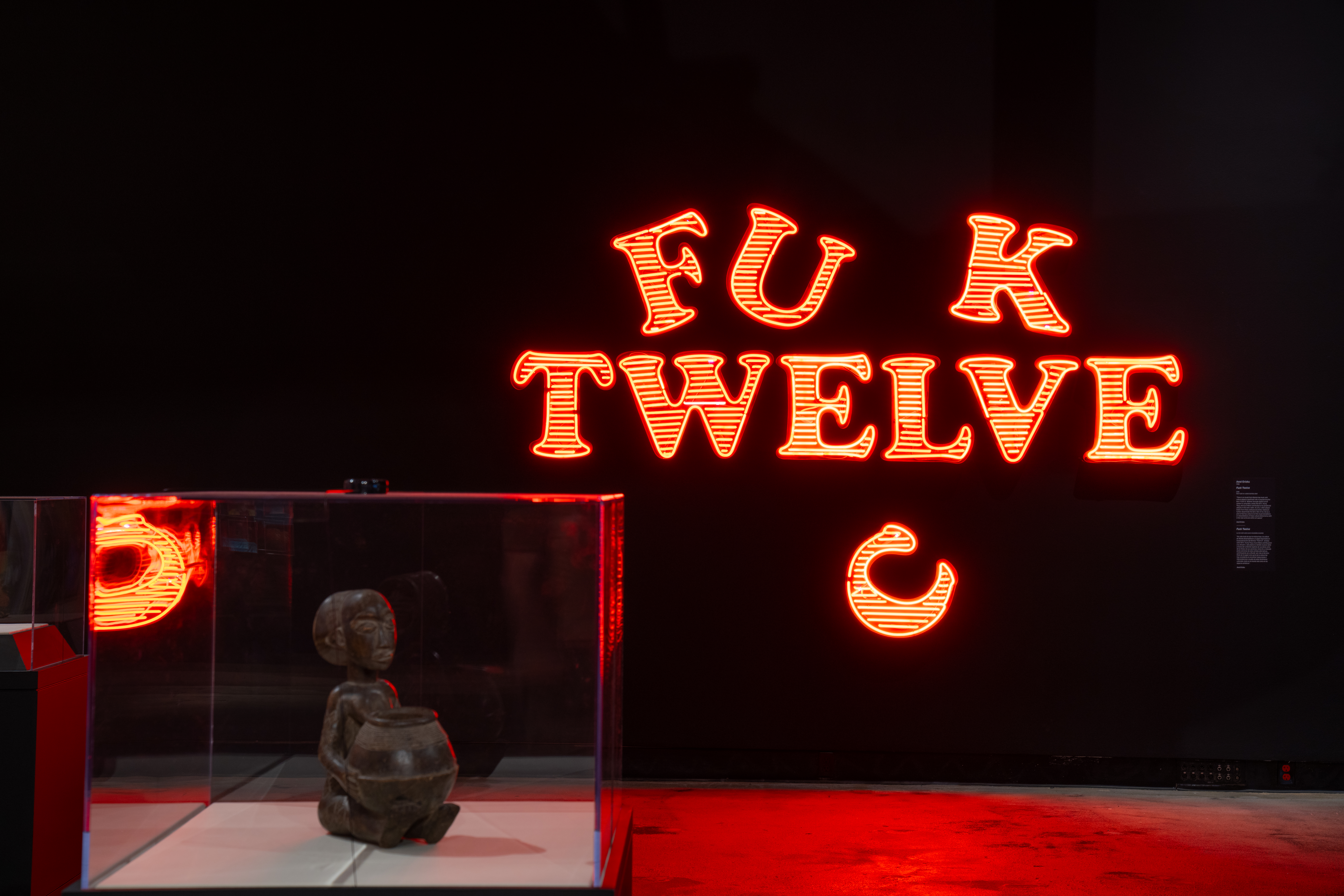
Installation view of Mystic Parallax. Photo courtesy of Tom McFetridge for the Momentary.
AWOL: I don’t know. Now, I can tell you that I’m a conceptual artist and everything that I’ve done in the last 10 years, with the book being a show of that, I no longer have to say for myself, “I’m not just a photographer.” You know what I mean? They see the icon of portraits, for instance, and they would say, “Oh, you’re an image-maker.” And although it’s the kind of foundation of my practice, it’s not the only thing that I do. I’ve made films, I’ve made sculptures. I will work with any medium that will drive the idea to the finishing point. I’m always surprising myself. I’m doing these new sculptures for Ben Brown Hong Kong in November that I’m really thrilled about, and that’s kind of a new territory.
SANDSTROM: What’s one thing that you really want young people to take away from this exhibition?
AWOL: Just one thing?
SANDSTROM: Yes.
AWOL: There are no rules.
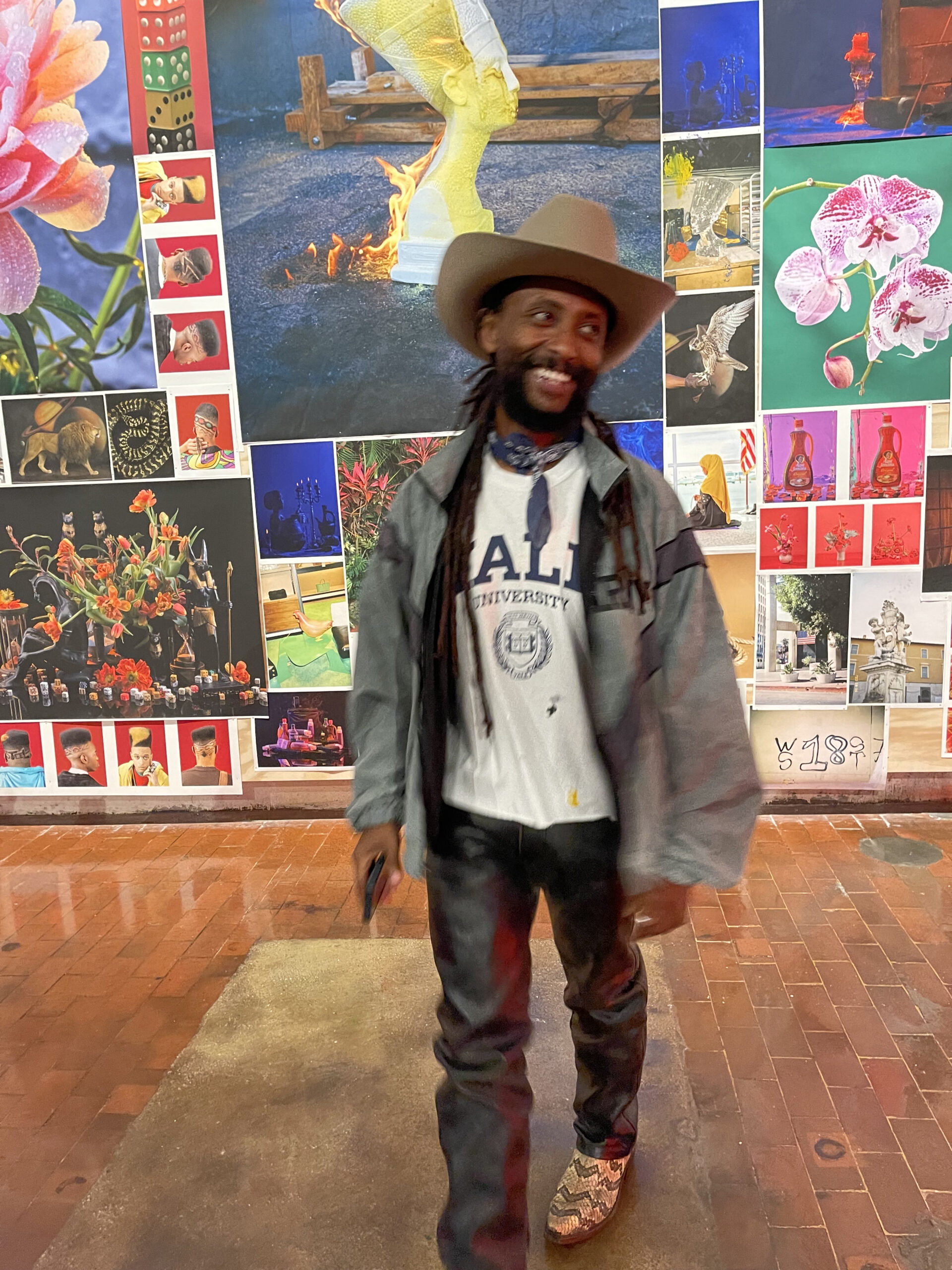
Photo courtesy of the artist.

